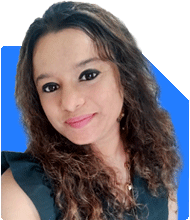I am having Rs.10 lakh for investment. I have enough exposure in shares and mutual fund. Where have I invest it ?
Ans: You already have good exposure in mutual funds and stocks. That is a great start. Having Rs.10 lakh now gives you a good opportunity to strengthen your overall portfolio.
Let us now explore where to invest this amount, from a 360-degree perspective. This answer is written keeping in mind your maturity, responsibility, and discipline.
We will focus on safety, liquidity, growth, and goal-alignment.
Check Existing Asset Allocation First
Before investing, take a pause.
Check how your current investments are spread.
How much is in equity?
How much is in fixed return assets?
How much is in liquid instruments?
Are your emergency needs covered?
Are your short-term needs secured?
This assessment will guide your next step.
If equity is already high, avoid adding more risk now.
If you have no debt allocation, let’s balance it.
Keep Rs. 2 Lakh as Emergency Reserve
This is your first line of defence.
No matter your age or job type, emergency reserve is a must.
It helps in job loss or medical need.
You won’t break investments in a crisis.
Keeps your long-term plans intact.
You can keep this in sweep-in FD or liquid funds.
Avoid putting it in equity or real estate.
This money is not for returns. It is for safety.
Invest Rs. 2 Lakh in Short-Term Safe Instruments
If you need money in 1-3 years, do not put it in shares.
Put it in safe short-term investments.
Choose debt mutual funds with 2-year maturity
You can also try low-duration or arbitrage funds
Debt funds are taxed as per your income slab.
So invest smartly and with a clear exit plan.
For short goals, returns matter less. Capital safety is key.
Use Rs. 6 Lakh for Long-Term Growth Funds
You already hold mutual funds and stocks.
You can still grow long-term wealth with a fresh view.
Choose quality actively managed equity mutual funds.
Do not pick index funds for this purpose.
Let us understand why.
Why Avoid Index Funds Now
Index funds copy the market. They don’t protect during falls.
They don’t beat inflation always.
They don’t adjust to changing conditions.
They are passive. No human involvement.
Actively managed funds are better.
They can shift across sectors.
They can avoid weak stocks.
They can protect in downturns.
They aim to outperform, not just mirror.
For long-term, growth matters. Not just cost.
Investing Rs. 6 lakh in a mix of flexi-cap, mid-cap, and small-cap funds is a good step.
But select them via a Certified Financial Planner-backed MFD only.
Choose Regular Plans, Not Direct Funds
If you are using direct funds, be cautious.
Direct plans may look cheaper, but come with risk.
Let us explain clearly.
Direct funds offer no advice.
You will have no guide during market fall.
No one will track your goals or SIP need.
Rebalancing will be your job.
With regular funds via MFD backed by a CFP:
You get help in fund selection.
You get goal-based allocation.
You get annual reviews.
You get tax efficiency tips.
So regular plans are better even if they cost slightly more.
You get peace and better results.
Goal-Based Investing Approach
Split this Rs.10 lakh based on your financial goals.
Each rupee must have a purpose. Let us break this Rs.10 lakh now.
Rs. 2L → Emergency fund
Rs. 2L → Short-term needs (1-3 years)
Rs. 6L → Long-term goals like retirement, child’s education, travel, etc.
Let each portion sit in different investments.
This way, no goal will disturb another.
You won’t touch long-term funds for short-term needs.
Investment Strategy for Retirement Goal
If you are investing for retirement, keep the following in mind:
Retirement is a non-negotiable goal.
It cannot be postponed or skipped.
You need inflation-beating returns.
So equity mutual funds are a must.
But all funds are not same.
Use flexi-cap, mid-cap, or balanced advantage category.
Choose via a Certified Financial Planner only.
Do not pick funds just based on ratings or names.
Strategy for Child’s Education or Marriage
If you have kids, their education needs must be planned.
Education costs will rise.
You need liquidity at exact time.
You cannot afford loss when goal is near.
If the goal is more than 10 years away:
Use equity mutual funds.
Shift to debt 2 years before goal.
If the goal is 3 to 5 years away:
Use debt funds with defined maturity.
Do not mix this with equity.
Capital safety matters more here.
Use Liquid Funds for Travel or Gifting Goals
Let’s say you want to travel next year.
Or gift gold to someone in 2 years.
Use liquid or arbitrage funds.
Don’t put this money in equity
Don’t use FD either
Use tax-efficient options like liquid funds
This gives safety and better tax-adjusted return.
And quick access in 24 hours if needed.
Review Your LIC/ULIP/Insurance Plans
If you have traditional LIC policies or ULIPs:
Please assess them now.
Ask these three questions:
Is return less than 6%?
Is policy combining insurance + investment?
Is it non-transparent in value or charges?
If yes, it is time to exit.
Surrender the policy and reinvest in mutual funds.
You get better returns and more clarity.
Life cover should be taken via term plans only.
Not with investment plans.
Tax Implications to Know
Here are new tax rules:
Equity Funds
If held > 1 year, gains > Rs. 1.25L taxed at 12.5%
If held < 1 year, gains taxed at 20%
Debt Funds
All gains taxed as per your income slab
So plan exit from equity wisely.
Avoid selling all in one year.
Use SWP after goal maturity.
Rebalance once a year to reduce tax impact.
Don’t Overexpose to Stocks or FDs
You already have shares and mutual funds.
Avoid adding more unless your goals demand it.
Also don’t add more in fixed deposits.
FDs give low post-tax return.
They should be used only for emergency or short-term use.
Don’t use FD as a long-term investment.
Returns don’t beat inflation.
Periodic Review is a Must
Investing once is not enough.
Review your plan once a year.
Check if goals are on track.
Check if SIPs need to grow.
Rebalance funds if needed.
This is best done with help of a Certified Financial Planner.
This gives an external eye and discipline.
Be Flexible Yet Focused
Do not lock all Rs.10 lakh in one place.
Keep some funds flexible.
But keep your focus on long-term goals.
You will always have clarity.
And peace of mind.
What You Should Not Do Now
Don’t invest in gold or real estate.
Don’t buy more insurance-linked products.
Don’t chase trending stocks or themes.
Don’t pick funds based on past returns alone.
Don’t go for annuities. They lock you with poor return.
Don’t compare your return with others. Your goals are different.
Finally
This Rs.10 lakh can strengthen your financial foundation.
You already have equity and mutual fund exposure.
Now balance your investments using this surplus.
Cover safety, liquidity, and future growth.
Split your money by goal, not product name.
Use regular mutual funds via MFD with CFP credential.
Avoid direct funds, index funds, annuities, and FDs for long-term.
Make sure your investments serve your life, not the other way.
You are doing well. Stay consistent.
This discipline will give you true financial freedom.
And joyful living too.
Best Regards,
K. Ramalingam, MBA, CFP,
Chief Financial Planner,
www.holisticinvestment.in
https://www.youtube.com/@HolisticInvestment


























